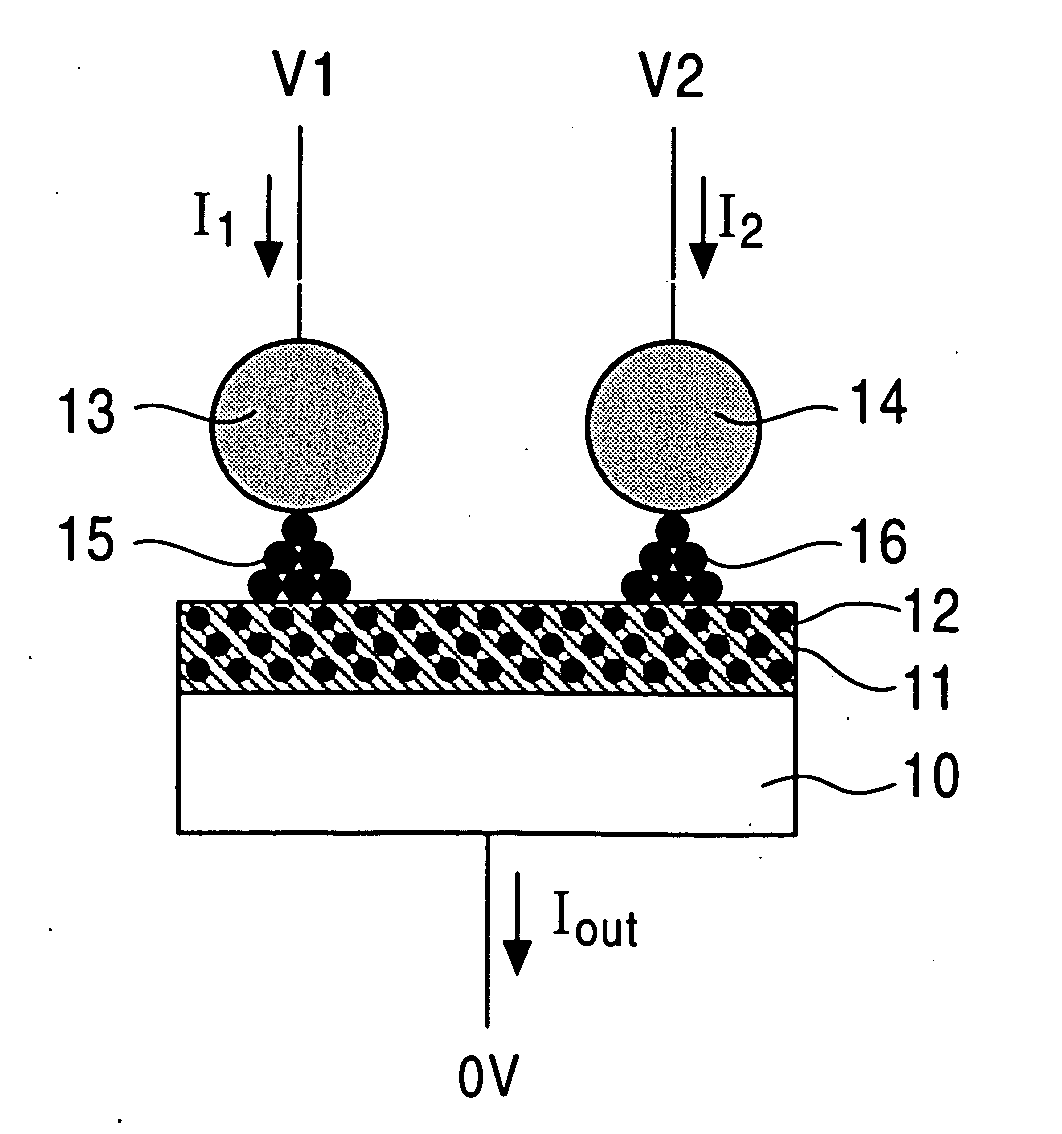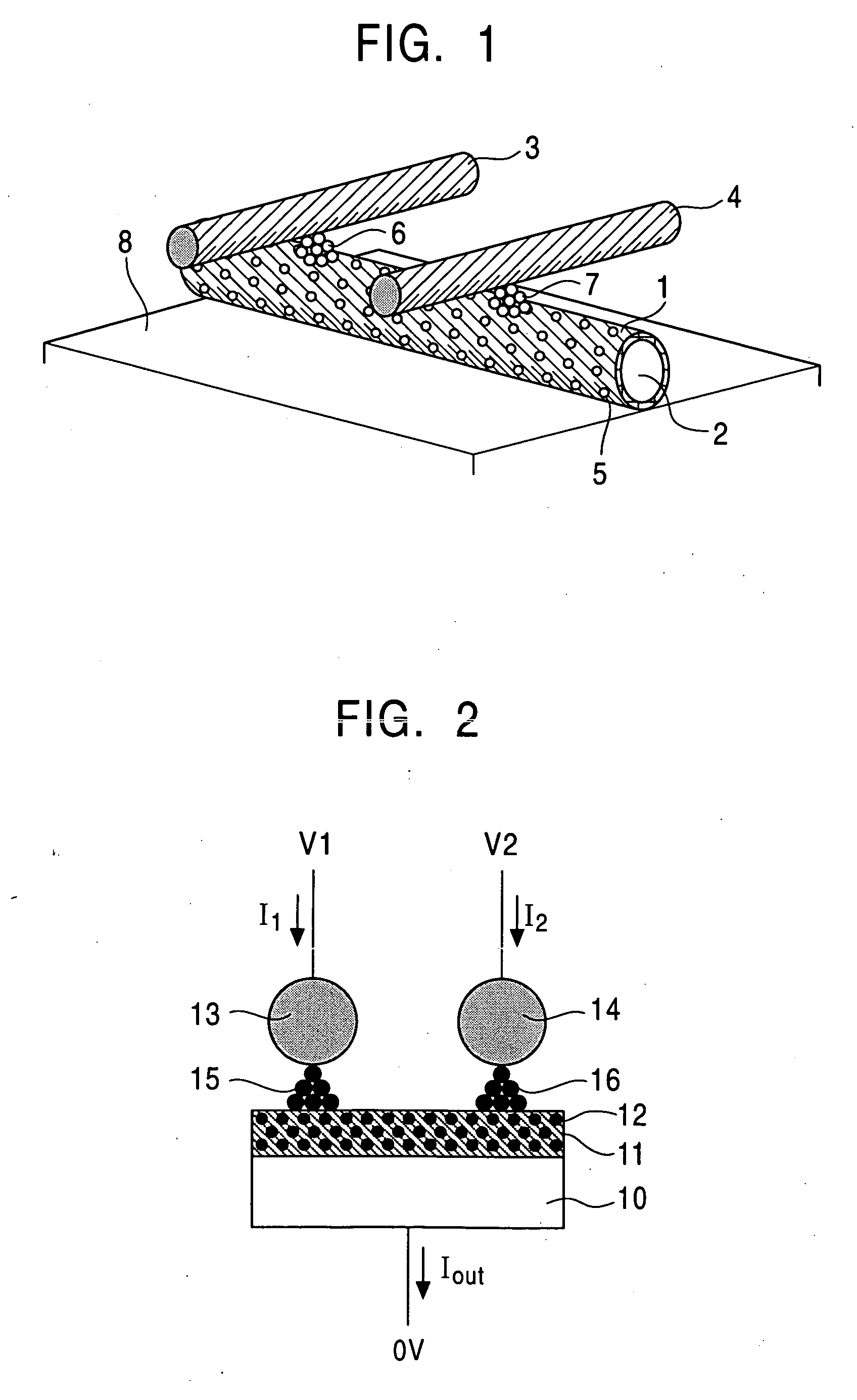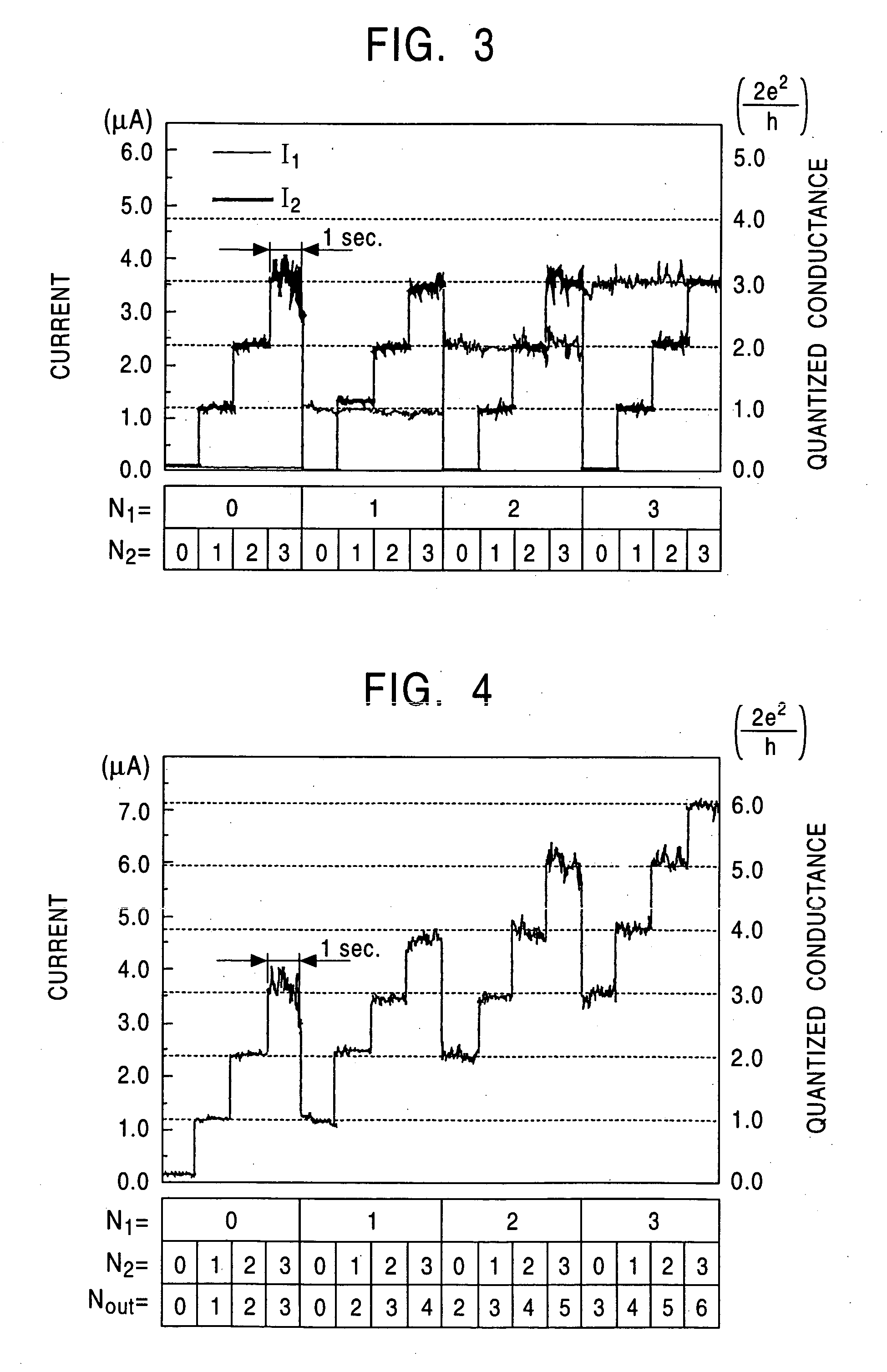Point contact array, not circuit, and electronic circuit using the same
a technology of point contact array and electronic circuit, applied in pulse technique, data switching network, instruments, etc., can solve the problems of difficult integration of these components and remarkable application restrictions
- Summary
- Abstract
- Description
- Claims
- Application Information
AI Technical Summary
Benefits of technology
Problems solved by technology
Method used
Image
Examples
first embodiment
[0069] the present invention will now be described.
[0070]FIG. 2 shows a schematic view of a point contact array according to the present invention, the point contact array being applied to a multiple memory device.
[0071] For the sake of simplification, a sample comprising two point contacts is used in a manner similar to FIG. 1. In this case, Ag2S is used as an electronic / ionic mixed conductive material 11 functioning as a first electrode and an Ag wire is used as a metallic wire 10. Pt wires are used as metallic wires 13 and 14 each functioning as a second electrode. The first electrode is grounded and voltages V1 and V2 are independently applied to the second electrodes 13 and 14, respectively. When negative voltages are used as V1 and V2, Ag atoms 12 contained in the electronic / ionic mixed conductive material 11 are precipitated to form bridges 15 and 16. When positive voltages are used as V1 and V2, the Ag atoms 12 in the bridges 15 and 16 return to the electronic / ionic mixed c...
second embodiment
[0078] the present invention will now be described.
[0079] First, an example in which an adding circuit is realized with the configuration shown in the first embodiment will be described.
[0080] According to the present invention, inputs denote the quantum numbers N1 and N2 of the quantized conductance of the point contacts serving as the bridges 15 and 16. The input operation is performed by controlling the voltages V1 and V2 to set each of N1 and N2 to a desired value. V1 and V2 are set to a reading voltage, for example, 10 mV and a current Iout flowing from the first electrode 10 to a ground potential is measured, thus obtaining the result of an arithmetic operation.
[0081]FIG. 4 shows the result of the arithmetic operation according to the second embodiment of the present invention. Below a graph, the inputted N1 and N2 and measured Nout are shown so as to correspond to the abscissa axis of the graph. It is found that the obtained current Iout has quantized conductance correspond...
third embodiment
[0082] the present invention will now be described.
[0083] The configuration shown in the first embodiment can also be applied to a subtracting circuit. Inputs are controlled by the same method described in the second embodiment. Upon subtraction, voltages, which have the same absolute value and whose polarities are opposite to each other, can be used as V1 and V2. For example, when V1 is set to 10 mV and V2 is set to −10 mV, the current Iout corresponding to quantized conductance, which corresponds to (N1−N2), flows from the first electrode to the ground potential. At that time, when the current flows in the direction from the first electrode to the ground potential, the result of the arithmetic operation indicates a positive value. When the current flows in the direction from the ground potential to the first electrode, the result of the arithmetic operation indicates a negative value.
[0084]FIG. 5 shows the result of the arithmetic operation according to the third embodiment.
[008...
PUM
 Login to View More
Login to View More Abstract
Description
Claims
Application Information
 Login to View More
Login to View More - R&D
- Intellectual Property
- Life Sciences
- Materials
- Tech Scout
- Unparalleled Data Quality
- Higher Quality Content
- 60% Fewer Hallucinations
Browse by: Latest US Patents, China's latest patents, Technical Efficacy Thesaurus, Application Domain, Technology Topic, Popular Technical Reports.
© 2025 PatSnap. All rights reserved.Legal|Privacy policy|Modern Slavery Act Transparency Statement|Sitemap|About US| Contact US: help@patsnap.com



